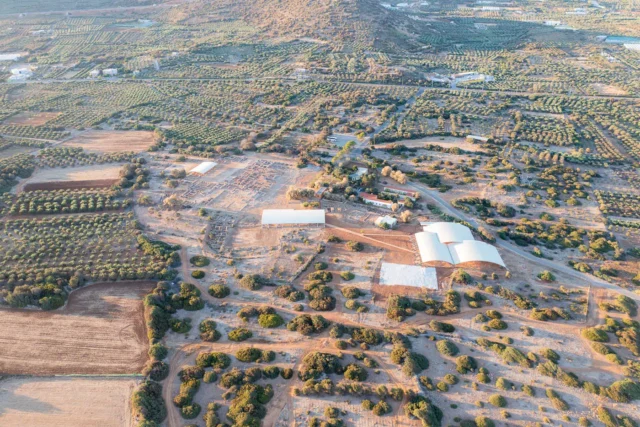
Festos (Phaistos)
Now closed
Phaistos, a significant Minoan city in Crete, second in importance to Knossos, located in the Messara Plain. It dates back to 4000 BCE with a palace built in 1900-1700 BCE. The city was destroyed by an earthquake around 1700 BCE and rebuilt with a larger palace. Phaistos had connections with Knossos, Hagia Triada, and Gortyn. Important findings include the Phaistos Disk, Kamares Ware, and architectural remains. After a decline, Phaistos was reoccupied in the Hellenistic period (c. 323-67 BCE) until conquered by Gortyn.

Knossos archaeological site
The Palace of Knossos, located on the Kephala hill south of Heraklion, Crete, is an important site of the ancient Minoan civilization. Occupied since around 7000 BCE during the Aceramic Neolithic period. The First Palace, built during the Middle Minoan IB-IIA period, represents a significant shift in Minoan society from a clan-based structure to a hierarchical one. This monumental building, covering nearly 10,000 square meters on the ground floor alone, served as a hub for administrative, storage, and cult activities. The First Palace also introduced innovative features like storage magazines, showcasing the society's wealth and resources. The New Palace emerged after a massive earthquake that occurred at the end of the Middle Minoan IIIA period, the palace underwent major reconstruction in the Middle Minoan IIIB period. Around 1450 BCE, widespread destruction occurred across Crete, affecting palaces and settlements. While Knossos suffered damage, it wasn't destroyed like other palaces. This period saw the introduction of Linear B, an early form of Greek script used by the Mycenaeans, suggesting their presence at Knossos. The final destruction of the palace, possibly in Late Minoan IIIA2 (1325-1300 BCE), left it deserted, but the town continued to exist. Knossos continued to be inhabited during the Classical, Hellenistic and Roman periods. Two basilicas from the First Byzantine period indicate that the city was still active during this time. Knossos appears to have followed the fate of other urban centers in Crete and declined early.

Malia Minoan Palace
Now closed
The Minoan archaeological site at Malia, located on the northern coast of Crete, is a significant site for understanding the Bronze Age civilization. The Palace of Malia is the third largest Minoan palace discovered. The palace and surrounding town and cemeteries offer a glimpse into the complex social, political, economic, and religious structures of Minoan society. The area was inhabited as early as the Early Neolithic period. The first monumental architecture at Malia, often referred to as the Old Palace, dates to the Early Minoan IIB period. This structure, or group of structures, was built around a large open space, sharing the same alignment as the later palace. The second palace, whose ruins are visible today, was built in the Late Minoan IA period, around 1650 BCE. It was constructed on the ruins of the Old Palace, inheriting its basic layout and orientation. The palace's central court, a defining feature of Minoan architecture, is oriented north-south. The New Palace at Malia met its demise around 1450 BCE, coinciding with the destruction of other Minoan sites across Crete. The cause of this widespread destruction remains a topic of scholarly debate.



